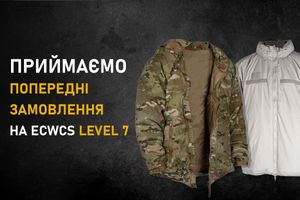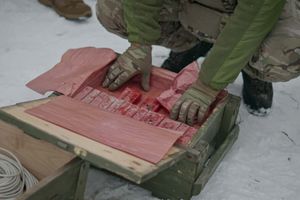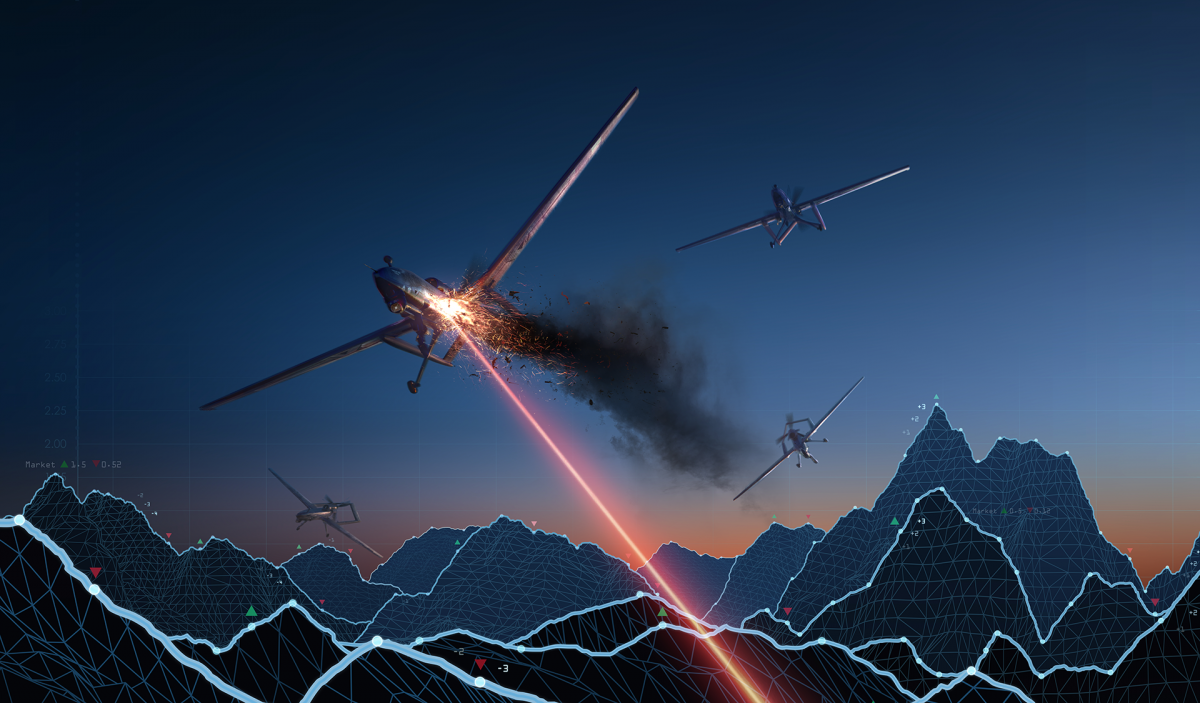
Laser weapons are no longer a fantasy. Today, dozens of leading companies from different countries are working on its development, and the prospects for its mass application are only a matter of time.
One of the areas of application of such weapons is countering unmanned aerial vehicles. In particular, laser systems have certain key advantages in dealing with drone swarms.
Unlike classic weapons, the laser never runs out of "cartridges", and its beams reach the target with incredible accuracy at the speed of light. And lasers are also economically profitable, because they have a much lower cost of a "shot", and therefore it makes sense to use them against threats such as cheap UAVs. In addition, today, thanks to the rapid development of technology, laser systems have become more compact and can now be placed on small land, water or air vehicles.
Yes, so far this is far from an ideal weapon, which also has its drawbacks, such as dependence on weather conditions or the need for uninterrupted power supply from a powerful source of electricity. However, huge funds are now being invested in its development, so we can say with confidence that laser weapons have quite interesting prospects.
United States of America
In 2017, the American company Lockheed Martin first demonstrated the capabilities of its ATHENA laser complex to counter small drones. Two years ago, at one of the training grounds in Oklahoma, the complex destroyed several UAVs of various types at once, which imitated enemy attacks and sequentially flew into "closed airspace" at short intervals. The complex's radar station displayed all these objects and transmitted data to the command post, after which the combat laser hit all detected targets.
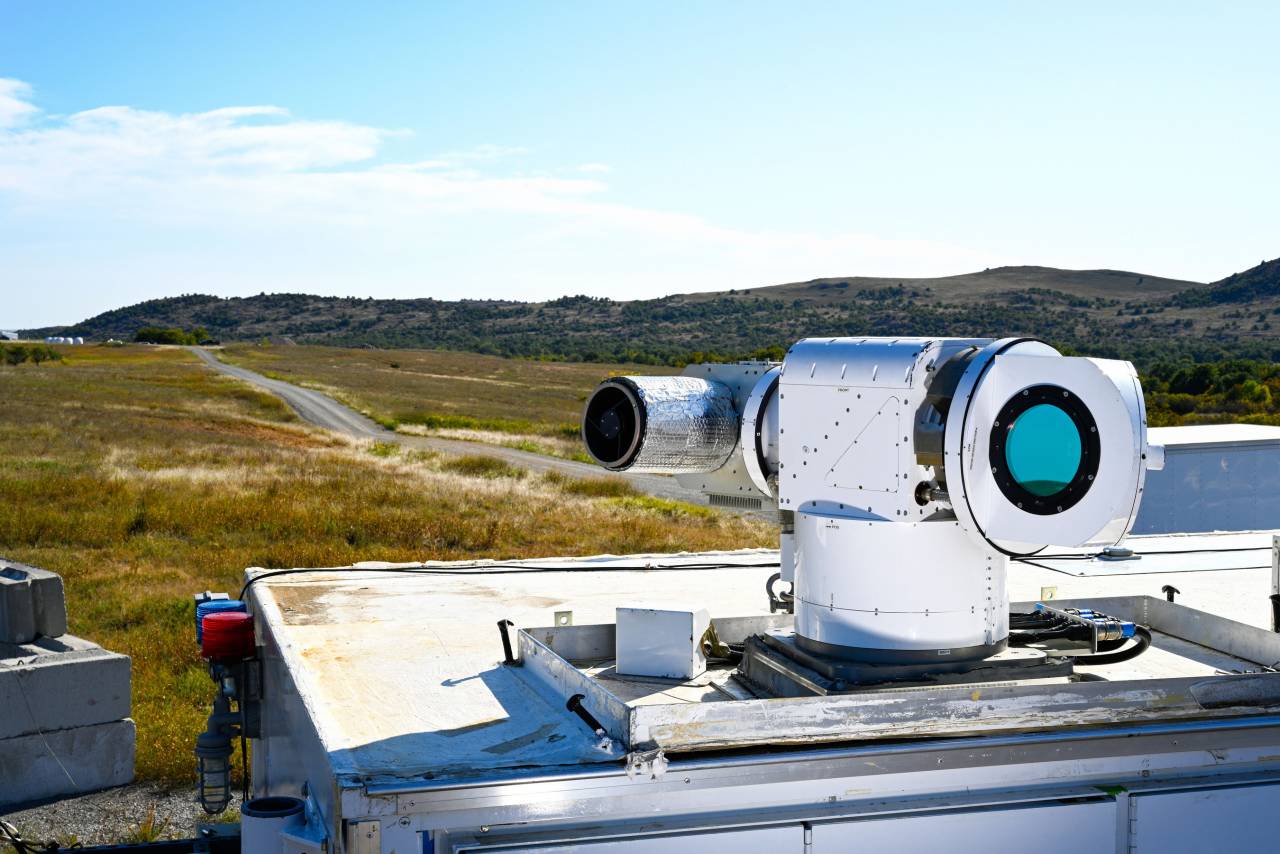
The ATHENA complex is based on a 30-kilowatt ALADIN laser (Accelerated Laser Demonstration Initiative). Structurally, it consists of three fiber-optic lasers with a power of 10 kW each. With the help of optical systems, the radiation of these three lasers is combined into one beam of the required power, which is directed to the target. This design has certain advantages, because the ATHENA system can emit a beam of various powers (from 10 to 30 kW) and select the most efficient mode, in which the power is better suited to the type of target. This increases the flexibility of the weapon, as well as extends component life and reduces operating costs.
Unfortunately, the main part of the tactical and technical characteristics of the ATHENA complex is not known. But according to some experts, this laser power can effectively hit targets at distances of about 1-1.5 kilometers. And the duration of the beam required to destroy the target is from 2 to 5 seconds.
Video from the tests of the ATHENA complex from Lockheed Martin. 2017
In 2019, the HELWS (High-Energy Laser Weapon System) from Raytheon was adopted by the American Air Force. For this project, a laser installation, a target detection system and a generator were placed on a Polaris MRZR buggy. As noted on the manufacturer's website, this “laser buggy” can make “several dozen laser shots” without being connected to an “outlet”. The system has already proven its effectiveness and reliability over 4000 operating hours. Also this year she received an "upgrade". Now the new version has better aiming accuracy and "increased magazine". The armament has passed the necessary certification for the possibility of its use in hostilities.
The main purpose of HELWS is the destruction of small drones, and in the future - missiles, artillery shells and mortars. In particular, the system is capable of detecting and destroying a drone at a distance of up to three kilometers. The installation is controlled by just one operator using a conventional game controller and a laptop.
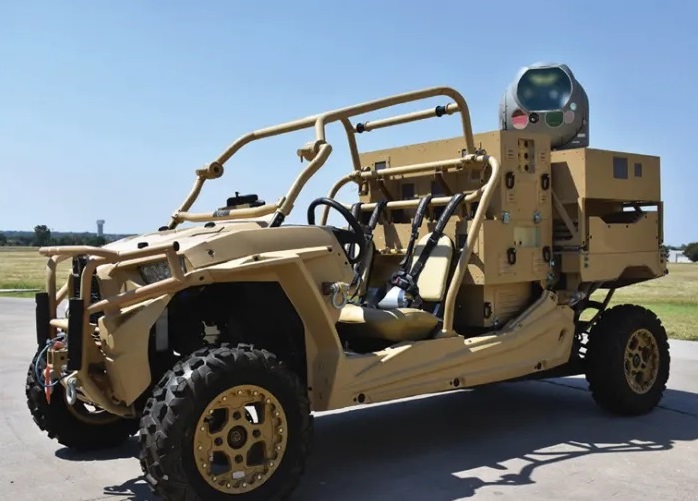
It means the US SS is so promising and can also help to secure its bases from drone attacks.
It also means that the Raytheon company is working on one more non-published Directed Energy-Maneuver Short-Range Air Defense (DE-MSHORAD) laser system. For a laser project, I push 50 kilowatts to install on Stryker armored vehicles. It is planned to go through the first tests of the prototypes of the installations by 2022.
Video demonstration of the HELWS system from Raytheon
Turkey
Turkey has been investing tens of millions of dollars in the development of innovative types of weapons for a long time. The first samples of her company's laser weapons were shown to the world in the early 2010s.
One of the most interesting modern designs was developed by Roketsan. The Alka complex combines laser and electromagnetic weapons, with the help of which it incapacitates and destroys single or group targets. The complex can be used in stationary mode or installed on the chassis of off-road vehicles.

The manufacturer's website indicates that “the Alka directed energy weapon system neutralizes or completely destroys targets such as improvised explosive devices, mini / micro UAVs carrying various cargo (cameras, explosives, etc.), and is also capable of counteracting attacks by swarms of drones ". Also, its specifications indicate the ability to work day and night, independently detect targets, automatically bring and accompany them. At the same time, in automatic mode, the system is able to track moving objects at a speed of 150 km / h. Alka selects the most vulnerable point on the target and has a high tracking accuracy, the error is only 8 millimeters per kilometer. The effective range of a target hit by a laser is 500 meters, an electromagnetic gun is 1 kilometer.
Alka system from Roketsan
Also, Aselsan and the Research Center for Informatics and Information Security (TUBITAK BILGEM) are working on the development of combat lasers. In June 2018, Aselsan demonstrated a BMC Amazon combat vehicle armed with an LSS laser cannon. The cannon was capable of striking small-sized UAVs at a distance of 500 meters and explosive devices from 200 meters. Aselsan also showed a video where an already serial combat laser burns through metal plates of various thicknesses, and at a fairly high speed.
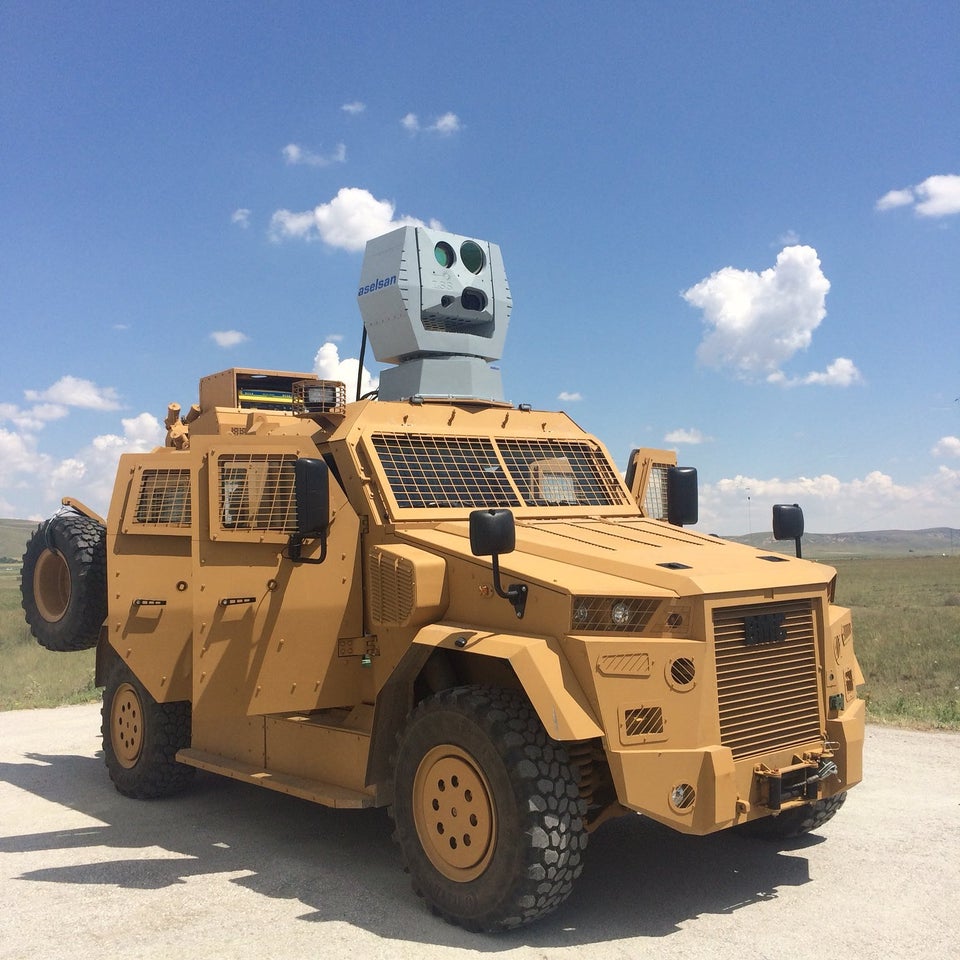
Some of the system's features include infrared and high-resolution cameras, laser rangefinder, optical focus, multi-target tracking, laser extinguishing output (used to improve RF performance) and laser masking (designed to protect the system from residues left over from laser use).
In the same year, the Research Center for Informatics and Information Security showed its ARMOL laser system, which was later successfully tested by the Turkish military. This 400 kg laser system was mounted on an Otokar Cobra armored vehicle. According to the developers, a laser with a power of 1.25 kilowatts is able to melt a 3-mm steel plate at a distance of 500 meters in just a few seconds.

It is worth adding that TUBITAK BILGEM is working on other laser weapons systems, including the 20-kilowatt YGLS (Yüksek Güçlü Lazer Sistemi) laser system for the Navy.
Video demonstration of the ARMOL laser system from TUBITAK BILGEM
Germany
Today, this country, of course, is one of the leaders in the development of combat laser systems. In particular, the German defense concern Rheinmetall has been working on stationary and mobile versions of the HEL (High Energy Laser) system since the 2000s. Their laser weapons are based on fiber-optic sources of laser radiation, which provide high power (from 5 to 100 kW), reliability (several tens of thousands of "shots") and low cost of a "shot" (from one to several euros). According to the developers, already now their lasers are capable of enhancing protection against small and medium-sized UAVs, helicopters, missiles, mines and artillery shells.
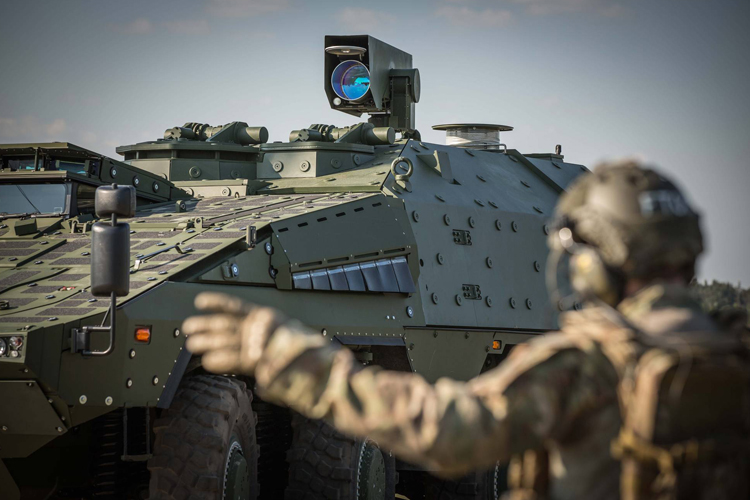
Back in 2012, Rheinmetall specialists, in the presence of international experts, tested two lasers with a power of 20 and 30 kW. From a distance of one kilometer, in seconds, they "cut" a steel beam 15 millimeters thick and destroyed a group of drones flying at a speed of 50 m / s at a distance of two kilometers. With the help of a special technology of superimposing the beam, the lasers were synchronously focused on one point and gave out a total of 50 kW. And the 30-kilowatt laser system amazed with the ability to independently track, aim and destroy steel bullets with explosives with a diameter of only 82 millimeters fired from the "mortar", flying at a speed of 50 m / s.
Later, in 2015, at IDEX-2015, the company demonstrated a mobile version of the HEL system. A 20 kW laser was installed on a Boxer 8 × 8 MRAV multipurpose armored vehicle. The range of his defeat reached 3000 meters. According to the developers, such a system is capable of disabling optoelectronic systems, UAVs, destroying the ammunition of weapons systems, explosive devices and unexploded ordnance, and the like.
Also, the platforms for HEL lasers of various power (from 5 to 50 kW) were the RUAG Defense M113 tracked armored personnel carrier and the Tatra 8 × 8 off-road truck protected.
In 2019, the developers demonstrated an updated version of their weapon. The new modular setup made it possible to combine several 20 kW lasers into a single beam. During testing, it successfully hit drones and mortar mines, and most importantly, it became compatible with the MANTIS anti-aircraft artillery system, which is in service with the Bundeswehr.
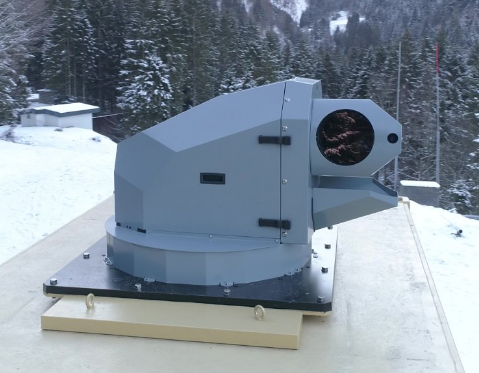
Work on laser systems in Germany continues to this day. The Bundeswehr's Federal Office for Equipment, Information Technology and Technical Support (BAAINBw) recently contracted the ARGE consortium, which includes Rheinmetall Waffe Munition and MBDA Deutschland, to build a laser weapons demonstrator for the Navy. The demonstrator should be manufactured, integrated and tested by the end of 2021. The first tests "in extremely realistic conditions" aboard the German Navy frigate F124 Sachsen are scheduled for next year.
Video demonstration of the capabilities and prospects of HEL combat lasers from Rheinmetall
Israel
For Israel, despite the tense military situation, the creation of new types of effective weapons is a vital necessity, and laser weapons are another means that will help significantly improve the effectiveness of airspace protection. Therefore, attempts to create this "weapon of the future" have been made here since the beginning of the 90s.
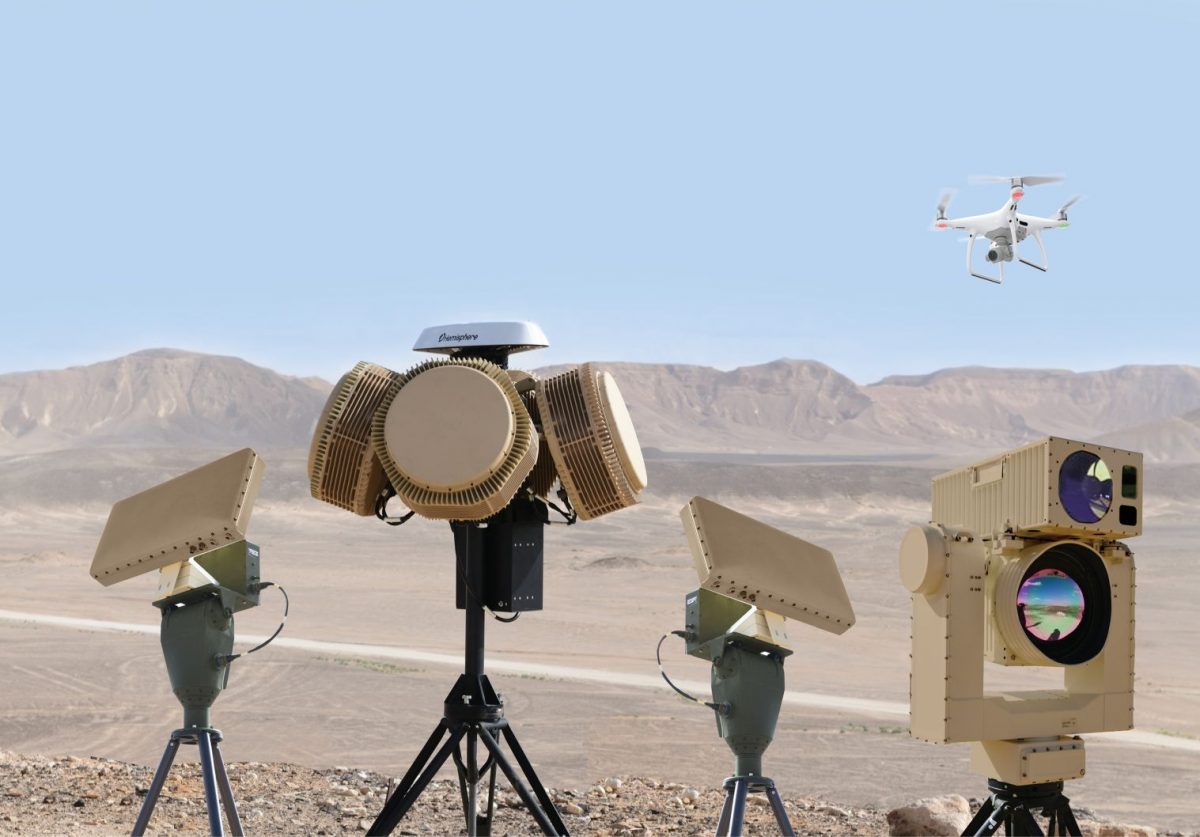
In 2020, the Israeli company Rafael Advanced Defense Systems demonstrated in action its compact laser Drone Dome complex for destroying unmanned aerial vehicles and their swarms. The complex can be both stationary and mobile if installed on an SUV. It consists of a radar, an optoelectronic target tracking system, a power supply system, a control system, a radio signal jammer and a laser (the power of which is not indicated). The Drone Dome can detect objects with an effective scattering area of only 0.002 sq. m at a distance of up to three and a half kilometers. After detection, the system automatically drives and holds the UAV or other object in the sight.
The video of the developer company shows how the laser melts the plastic body of the quadcopter in the air, including those that were trying to maneuver.
Another system called Light Blade, capable of destroying drones, was developed at the Israeli Ben-Gurion University in the Negev, or rather at the university's company OptiDefense.
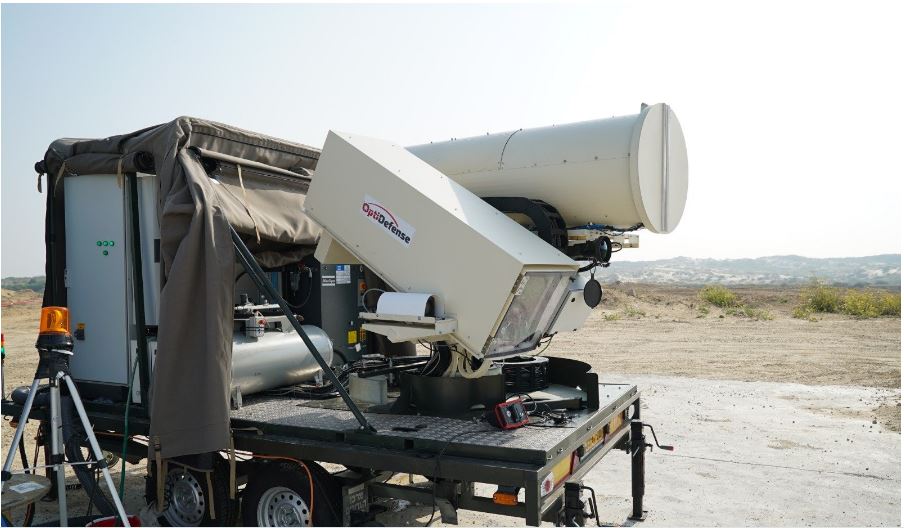
It was developed to counter terrorist threats, in particular, mini UAVs and ... balloons and kites with incendiary mixtures or explosive devices that are launched from the Gaza Strip. Last year, in just 10 days of testing, the laser system helped Israel Border Police intercept 150 explosive balloons.
Of course, this is the main advantage of laser weapons is their cost-effectiveness. Agree, spending a lot of money on a balloon, shells or rockets in order to "shoot down" a bunch of balloons is not a very good idea. A completely different matter is a laser, the "shot" of which, according to the developers, costs less than one dollar. Another advantage of such a weapon is the safety of its use even in an urban environment. Light Blade is capable of hitting targets day and night with an effective range of 2 kilometers. The entire system, along with the power supply and threat detection system (SupervisIR from Elbit Systems), can be transported on a small trailer or truck.
OptiDefense Light Blade Laser
Sources: https://armyinform.com.ua/2021/04/lazery-proty-droniv/
https://armyinform.com.ua/2021/05/lazery-proty-droniv-2/
Author: Vladislav Demyanenko
















































































































































